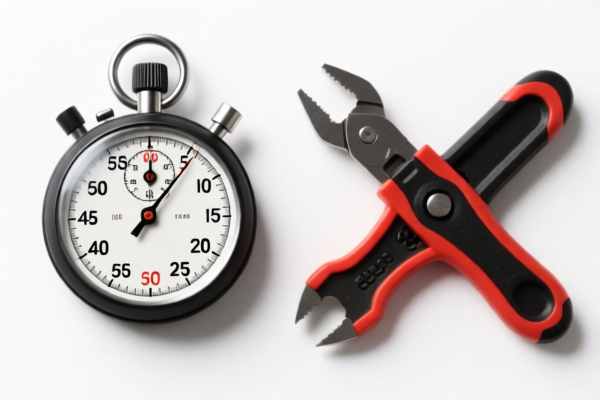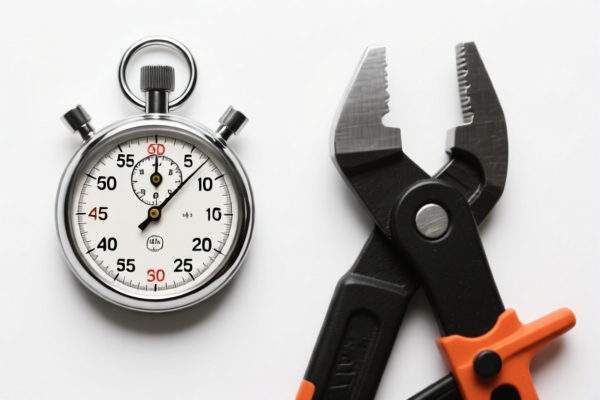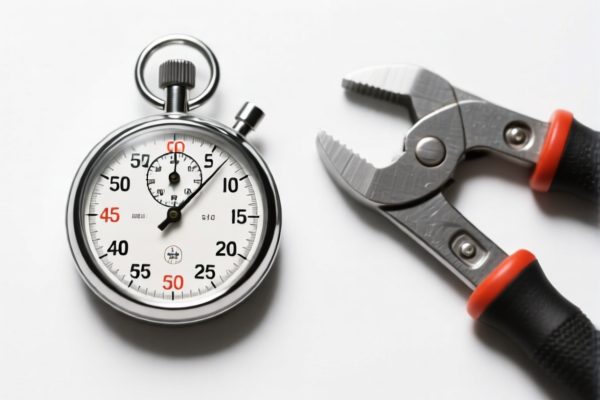| HS Code | Official Doc | Tariff Rate | Origin | Destination | Effective Date |
|---|---|---|---|---|---|
| 9017800000 | Doc | 60.3% | CN | US | 2025-05-12 |
| 9017208040 | Doc | 59.6% | CN | US | 2025-05-12 |
| 9031808060 | Doc | 30.0% | CN | US | 2025-05-12 |
| 9031808070 | Doc | 30.0% | CN | US | 2025-05-12 |
| 8483908040 | Doc | 57.8% | CN | US | 2025-05-12 |
| 8483908080 | Doc | 57.8% | CN | US | 2025-05-12 |




Timing Tools
Timing tools are instruments used to measure, track, and manage durations of events or intervals. They encompass a broad range of devices, from simple mechanical timers to sophisticated digital systems, serving diverse purposes across numerous fields.
Materials
The materials used in timing tools vary significantly based on the type and complexity of the device.
- Mechanical Timers: Commonly utilize materials like brass, steel, stainless steel, and durable plastics for gears, springs, housings, and dials.
- Digital Timers: Incorporate electronic components such as quartz crystals, integrated circuits, LCD or LED displays, and plastic or metal casings.
- Smart Timers/Stopwatches: Feature components similar to digital timers, plus microcontrollers, Bluetooth modules, and rechargeable batteries, often encased in robust plastics or aluminum alloys.
- Software Timers: Exist as code-based applications, relying on computer hardware and storage.
Purpose
The core purpose of timing tools is to provide accurate and reliable measurement of time intervals. Specific purposes include:
- Event Timing: Recording the duration of athletic events, races, or performances.
- Process Control: Monitoring and regulating the length of manufacturing processes, chemical reactions, or cooking times.
- Time Management: Tracking work hours, project deadlines, or task completion times.
- Scientific Research: Precisely measuring reaction rates, decay times, or experimental durations.
- Personal Use: Managing personal activities, workouts, or daily routines.
Function
The functionality of timing tools varies based on their design:
- Start/Stop/Reset: Basic functionality for initiating, pausing, and clearing time measurements.
- Lap/Split Timing: Recording multiple time intervals within a single event.
- Countdown/Count-Up: Measuring time elapsed or remaining.
- Alarm/Notification: Signaling the completion of a timed interval.
- Data Logging: Storing time measurements for later analysis.
- Connectivity: Transferring data to computers or other devices via Bluetooth, USB, or Wi-Fi.
- Programmability: Allowing users to customize timing intervals and settings.
Usage Scenarios
- Sports and Athletics: Track race times, interval training, and performance metrics.
- Cooking: Monitor baking, boiling, and simmering times.
- Manufacturing: Control production line speeds, cycle times, and curing processes.
- Laboratory Research: Measure reaction rates, decay times, and experimental durations.
- Project Management: Track task completion times, deadlines, and resource allocation.
- Fitness and Exercise: Monitor workout intervals, rest periods, and overall training duration.
- Photography/Videography: Control exposure times, interval shooting, and time-lapse sequences.
Common Types
- Mechanical Stopwatches: Traditional devices utilizing gears and springs for accurate manual timing. Require user operation for start, stop, and reset.
- Digital Stopwatches: Employ quartz crystals for precise timekeeping, offering features like lap timing and multiple display modes.
- Kitchen Timers: Designed for cooking, often with audible alarms and easy-to-read displays. Can be mechanical or digital.
- Interval Timers: Specifically for interval training, with programmable work and rest periods.
- Programmable Logic Controllers (PLCs): Industrial-grade devices used for complex timing and control applications in manufacturing and automation.
- Software Timers: Applications on computers or smartphones providing timing and stopwatch functionality. Examples include timers within operating systems, specialized timing software, or smartphone apps.
- Smart Timers/Stopwatches: Digital timers with advanced features like Bluetooth connectivity, data logging, and smartphone integration.
- Countdown Timers: Used to measure time remaining until an event or deadline. Often used in presentations, meetings, or as reminders.
Based on the provided information, the following HS codes may be relevant to “timing tools”:
-
9017800000: This HS code covers “Other instruments”. The tax details are a basic tariff of 5.3%, an additional tariff of 25.0%, and an additional tariff of 30.0% after April 2, 2025, resulting in a total tariff of 60.3%. This could apply if the timing tools are considered specialized measuring or testing instruments not specifically categorized elsewhere.
-
9031808060: This HS code covers “Other instruments, appliances and machines: Other Equipment for testing the characteristics of internal combustion engines: For testing electrical characteristics”. The tax details are a basic tariff of 0.0%, an additional tariff of 0.0%, and an additional tariff of 30.0% after April 2, 2025, resulting in a total tariff of 30.0%. If the timing tools are used for electrical testing of internal combustion engines, this code may be applicable.
-
9031808070: This HS code covers “Other instruments, appliances and machines: Other Equipment for testing the characteristics of internal combustion engines: Other”. The tax details are a basic tariff of 0.0%, an additional tariff of 0.0%, and an additional tariff of 30.0% after April 2, 2025, resulting in a total tariff of 30.0%. This code could apply if the timing tools are used for testing internal combustion engines but do not specifically test electrical characteristics.
It is important to note that the classification of timing tools will depend on their specific function and application. If the timing tools are primarily used for measuring or checking, HS code 9017800000 may be the most appropriate. If they are specifically designed for testing internal combustion engines, HS codes 9031808060 or 9031808070 may be more suitable.
Customer Reviews
No reviews yet.